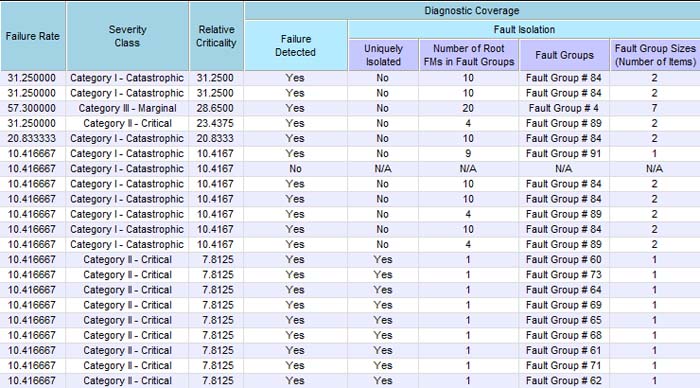

Products
eXpress Critical Failure Diagnosis Chart
The chart produced by this configuration provides analysts with an excellent tool for determining how well critical failures are handled by system diagnostics. When standard FMECA activities examine the diagnosis of a critical failure, they usually consider it sufficient to indicate whether or not that failure can be detected by the diagnostics. Although useful for minimizing the likelihood that a non-detected fault will result in a catastrophic system failure, standard FMECA analysis techniques offer very little to help analysts identify and eliminate other consequences of poorly-developed diagnostics, such as inflated False Alarm rates or large numbers of unnecessary System or Mission Aborts.
The “Uniquely Isolated” column, for instance, indicates whether or not the set of failure modes that are indicted (called into suspicion) by the diagnostics when this failure occurs are all possible root causes of this failure. If the fault group associated with this failure contains any failure modes that are not a root cause of that failure, then the failure is not uniquely isolated by diagnostics. The non-unique isolation of critical failures is a primary driver of false alarms and unnecessary system or mission aborts.

Related Links:
Diagnostic-Informed FMECA Assessments
Diagnostic-Informed FTA Assessments


